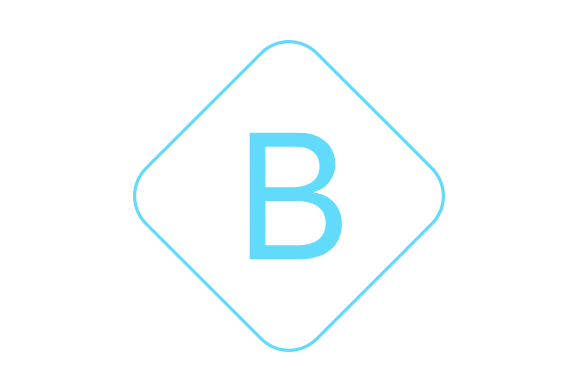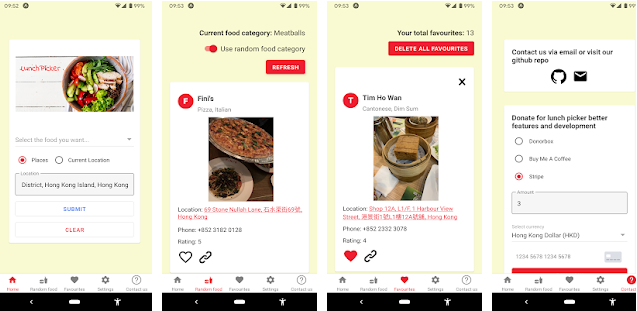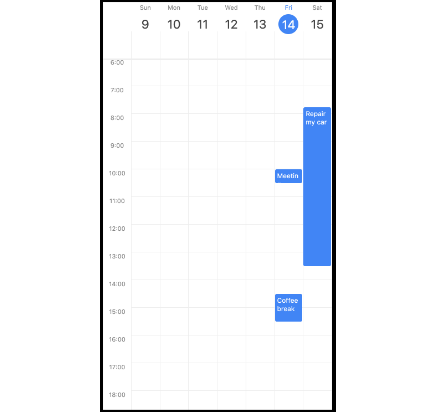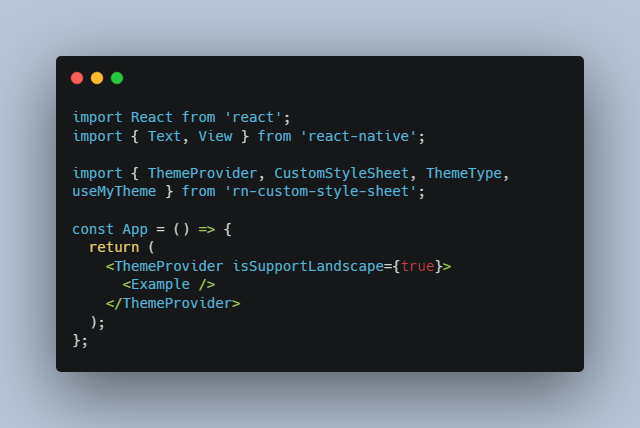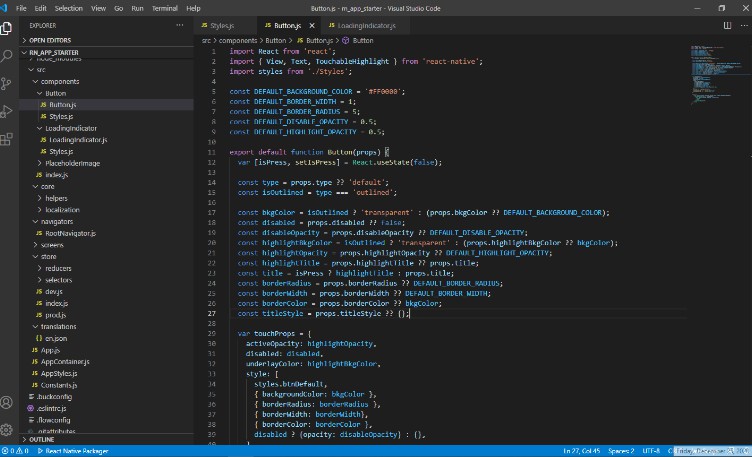React Native Bootstrap Styles
Bootstrap style library for React Native.
Original class names are transformed from "dashed" to "camelcase" format, for example: text-center to textCenter and my-sm-4 to 'mySm4'. Also all the constants (variables in terms of Bootstrap) could be accessible in templates. It helps to make custom tweaks preserving styling guidelines, for example: {fontSize: 10 * FONT_SIZE_BASE}.
Documentation with snippets and live samples: alpha version.
Hello world app with the styles:
import React, { Component } from 'react';
import { View, Text } from 'react-native';
import BootstrapStyleSheet from 'react-native-bootstrap-styles';
const
BODY_COLOR = '#000022',
TEXT_MUTED = '#888888';
// custom constants
const constants = {
BODY_COLOR, TEXT_MUTED,
};
// custom classes
const classes = {
title: {
color: 'red',
}
};
const bootstrapStyleSheet = new BootstrapStyleSheet(constants, classes);
const {styles: s, constants: c} = bootstrapStyleSheet;
class Hello extends Component {
render() {
return (
<View style={[s.body]}>
<View style={[s.container, s.h100, s.justifyContentCenter]}>
<Text style={[s.text, s.h3, s.textPrimary, s.myXs1, s.myMd3]}>Hello world!</Text>
<Text style={[s.text, s.py3, {fontSize: 5 * c.REM}]}>????</Text>
</View>
</View>
);
}
}
Constants
Bootstrap renamed constants to variables some time ago.
No renaming here for now. See actual example above.
Check the full list of constants in the source code:
./src/constants.js
Extra dynamic parameters available as constants or properties of the bootstrapStyleSheet object:
DIMENSIONS_WIDTH, // ex. 750
DIMENSIONS_HEIGHT, // ex. 1334
DIMENSIONS_MAX, // ex. 1334
ORIENTATION_PORTRAIT, // ex. true
ORIENTATION_LANDSCAPE, // ex. false
MODE_LIGHT, // ex. false
MODE_DARK, // ex. true
SCREENS, // ['Xs', 'Md']
SCREEN, // ex. 'Md'
Events
Styles, containing "media queries", are automatically updated on dimentions, orientaion and mode changes. There is nothing to bother about, except one little thing. Components should be forced to re-render with the updated styles. That's where the events could be helpful:
- addDimensionsListener
- addOrientationListener (portrait/landscape)
- addModeListener (light/dark)**
Here is an example:
class App extends Component {
componentDidMount() {
bootstrapStyleSheet.addDimensionsListener(data => {
// params are accessible
// const dimensions = data;
// direct call
// this.forceUpdate();
// or via state change
// this.setState({update: me})
// or via redux state change
// dispatch('NAME', {update: me})
});
}
render() {
// poor pattern, supposed to be passed in state or props
const width = bootstrapStyleSheet.DIMENSIONS_WIDTH
return (
<View style={s.container}>
<Text style={[s.mediaDependentClass]}>Screen width: {width}</Text>
</View>
);
}
}
** extra package should be installed: react-native-appearance.
Layout
Simplified version of the original layout classes.
Any ideas how to extend grid classes are welcome.
Impelemented features: .container-*, .gutters-*, .no-gutters-*. .row-{screen}-{n}, .col-{screen}-{n}.
Among non-impelemented features: .row-cols-*, .offset-*-*, .order-*-*.
Content and Utilities
Check the related chapter in the Bootstrap documentation to get the list of all the utilities.
What's implemented or near to:
- align
- background
- borders
- display
- flex
- sizing
- spacing
- text
also:
- tables
Elements
Bootstrap calls them components. The term is changed to not mess with React components.
Check the related chapter in the Bootstrap documentation to get the list of all the elements (ie components).
What's implemented or neat to:
- buttons
- cards
- forms
- modal
- pagination
- progress
Buttons
TouchableHighlight as button:
<TouchableHighlight onPress={this.onPress} style=[{s.btnTouchable}]>
<View style={[s.btn, s.btnPrimary]}>
<Text style={[s.btnText, s.btnPrimaryText]}>Signup</Text>
</View>
</TouchableHighlight>
Links as default and outline buttons with some optional tweaks (see underlayColor):
// import { Link } from 'react-router-native';
<Link to="/submit" component={TouchableHighlight} underlayColor={c.BLACK} style={[s.btnTouchable]}>
<View style={[s.btn, s.btnPrimary]}>
<Text style={[s.btnText, s.btnPrimaryText]}>Submit</Text>
</View>
</Link>
<Link to="/cancel" component={TouchableHighlight} underlayColor={c.BLACK} style={[s.btnTouchable, s.mt3]}>
<View style={[s.btn, s.btnOutlinePrimary]}>
<Text style={[s.btnText, s.btnOutlinePrimaryText]}>Cancel</Text>
</View>
</Link>
Card
Basic card:
<View style={[s.card]}>
<View style={[s.cardBody]}>
<Text style={[s.text]}>Hello Card!</Text>
</View>
</View>
Modal
Basic modal (temporal approach, till higher level component added to the lib):
<Modal
animationType={animationType}
transparent={transparent}
visible={this.state.modal}
onRequestClose={this.hide}
onShow={this.onShown}
onDismiss={this.onHidden}
>
<View style={[s.modal]}>
<View style={[s.modalDialog]}>
<View style={[s.modalContent]}>
<Text style={[s.text]>Hello Modal!</Text>
</View>
</View>
</View>
</Modal>
Progress bar
Basic progress bar
<View style={[s.progress]}>
<View style={[s.progressBar, {width: `${progress * 100}%`}]} />
</View>
Misc
Selectors
An attempt to mimic CSS selectors for group pseudo-classes, such as :first-child, and media queries:
<View style={[s.flexRow]}>
{
group.map((item, index) => (
<View key={index} style={[s.selectorFirstChild(index, s.bgLight)]}>
<Text style={[s.selectorMediaUpMd([s.text, s.textPrimary])>Colored for Md+</Text>
<Text style={[s.selectorMediaLandscape([s.text, s.textPrimary])>Colored for Lanscape</Text>
</View>
))
}
</View>
Check the full list of selectors in the source code:
./src/mixins/selectors.js
Some element classes have selector-based extensions, for example cardHeaderFirstChild:
provide an example...
Custom
flexis an alias forflex1, and the same forflex{screen}- some styles contain undocumented, but supported by Yoga, instructions, such as
width: '100%'. React Native uses Yoga as a layout engine.
